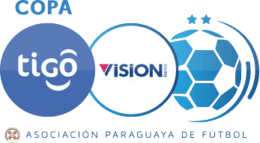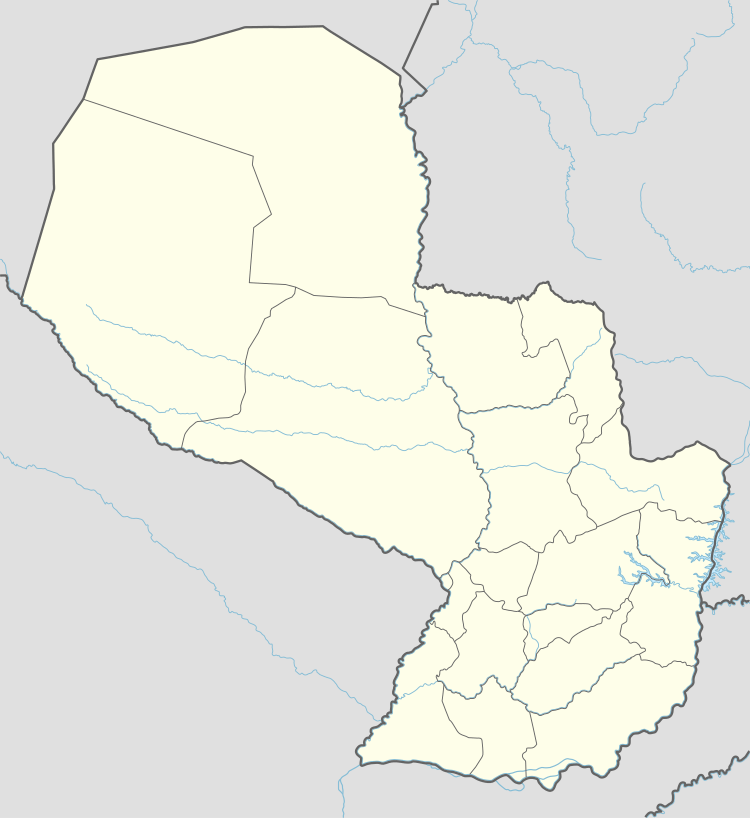Paraguayan Primera División
 | |
| Country | Paraguay |
|---|---|
| Confederation | CONMEBOL |
| Founded | 1906 |
| Number of teams | 12 |
| Level on pyramid | 1 |
| Relegation to | División Intermedia |
| International cup(s) |
Copa Libertadores Copa Sudamericana |
| Current champions |
Libertad (2016 Apertura) |
| Most championships | Olimpia (40 titles) |
| TV partners | Unicanal (Three games per matchday) |
| Website | APF |
|
| |
The División Profesional de la Asociación Paraguaya de Fútbol (locally: [diβiˈsjon pɾofesjoˈnal de la asosjaˈsjon paɾaˈɣwaʝa ðe ˈfutβol]; Professional Division of the Paraguayan Football Association), also known as the Primera División [pɾiˈmeɾa ðiβiˈsjon] (first division), or due to sponsorship reasons Copa TIGO [ˈkopa ˈtiɣo], is the top-flight professional football league in Paraguay. Currently, there are 12 teams in the first division.
The most successful club is Olimpia, with 40 championships. The Apertura 2015 champion was Cerro Porteño. IFFHS ranked the league as the ninth strongest in the world in 2012,[1] and the eleventh strongest in the world in 2013.[2]
History
Liga Paraguaya's first game was played in 1906, after the director of the El Diario newspaper, Don Adolfo Riquelme, brought to his office on 18 June 1906, the representatives of the five existing football teams in Paraguay at that time (Olimpia, Guaraní, Libertad, General Díaz, and Nacional) to create the governing body of football in Paraguay: the Liga Paraguaya de Fútbol (known today as Asociación Paraguaya de Fútbol). The representatives were William Paats and Junio Godoy (Olimpia) Ramón Caballero, Manuel Bella and Salvador Melián (Guaraní), Juan Escalada (Libertad), César Urdapilleta (General Díaz), and Vicente Gadea (Nacional).[3] The Liga Paraguaya saw Club Guaraní as the first champion in 1906, after defeating Olimpia in the final.
The Primera División was founded in 1906 with 5 teams, and turned professional in 1935 when 10 clubs broke away from the amateur leagues to form a professional league. Since 1996 the format of tournament was changed to Torneo Apertura and Clausura, but since 2008 each tournament is independent.
Traditionally, the dominance of Olimpia and Cerro Porteño went mostly unchallenged for decades. All of this changed at the turn of the 21st century. Since then, Libertad has been the most dominant club, while Nacional and Guarani have also experienced success at the local level.
Format
The system of the tournaments is round-robin. 12 teams play two rounds of 11 dates either away or home games, in total 22 dates in each tournament. Each year tournaments are divided in two independents tournaments: the Torneo Apertura (Opening Tournament) from February to July, and the Torneo Clausura (Closing Tournament) from July to December.
Relegation is based on an averaging system. At the end of each season, the two teams with the worst three-year averages are relegated, and the two best teams in the "División Intermedia" (second division) are promoted to Primera División.
International cup participation
Since 2012, Paraguay have seven slots in international cups (three in the Copa Libertadores de America and four in the Copa Sudamericana). These seven slots will be filled by five teams.
In the Copa Libertadores, the winner of the Apertura and Clausura tournaments qualify automatically. The third representative (going into the first round play-off) is the best placed non-champion from the cumulative table of both the Apertura and Clausura.
In the Copa Sudamericana, the champion of the Apertura and Clausura tournaments qualify, with the 4th and 5th best placed teams from the Apertura and Clausura cumulatives.
First Division teams
The following are the teams in the first division in 2016:
Stadia and location

| Team | Manager | Home city | Stadium | Capacity |
|---|---|---|---|---|
| Cerro Porteño | | Asunción | General Pablo Rojas | 32,000 |
| Capiatá | | Capiatá | Lic. Erico Galeano Segovia | 10,000 |
| Guaraní | | Asunción | Rogelio Livieres | 6,000 |
| General Caballero | | Asunción | Hugo Bogado Vaceque | 5,000 |
| General Díaz | | Luque | General Adrián Jara | 3,500 |
| Libertad | | Asunción | Dr. Nicolás Leoz | 10,000 |
| Nacional | | Asunción | Arsenio Erico | 4,000 |
| Olimpia | | Asunción | Manuel Ferreira | 15,000 |
| River Plate | | Asunción | River Plate | 5,000 |
| Rubio Ñu | | Asunción | La Arboleda | 5,000 |
| Sol de América | | Villa Elisa | Luis Alfonso Giagni | 5,000 |
| Sportivo Luqueño | | Luque | Feliciano Cáceres | 25,000 |
List of champions
Amateur era
Professional Era
Titles by club
Topscorers
See also
- Football in Paraguay
- Paraguayan football league system
- División Intermedia
- Paraguayan Tercera División
- Paraguayan Primera División B
- Primera División B Nacional
- Paraguayan Cuarta División
- Campeonato Nacional de Interligas
- Unión del Fútbol del Interior
- Paraguayan women's football championship
- Football Federation of the 1st Department Concepción
- Football Federation of the 2nd Department San Pedro
- Football Federation of the 3rd Department Cordillera
- Football Federation of the 4th Department Guairá
- Football Federation of the 5th Department Caaguazú
- Football Federation of the 6th Department Caazapá
- Football Federation of the 7th Department Itapúa
- Football Federation of the 8th Department Misiones
- Football Federation of the 9th Department Paraguarí
- Football Federation of the 10th Department Alto Paraná
- Football Federation of the 11th Department Central
- Football Federation of the 12th Department Ñeembucú
- Football Federation of the 13th Department Amambay
- Football Federation of the 14th Department Canindeyú
- Football Federation of the 15th Department Presidente Hayes
- Football Federation of the 16th Department Alto Paraguay
- Football Federation of the 17th Department Boquerón
References
- ↑ Daily "Hoy" (ed.): Paraguay tiene la 9na mejor liga del mundo. (in Spanish) 8 January 2013. Retrieved 10 July 2013.
- ↑ "THE STRONGEST NATIONAL LEAGUE OF THE WORLD". Retrieved 30 October 2014.
- ↑ Historia de la APF